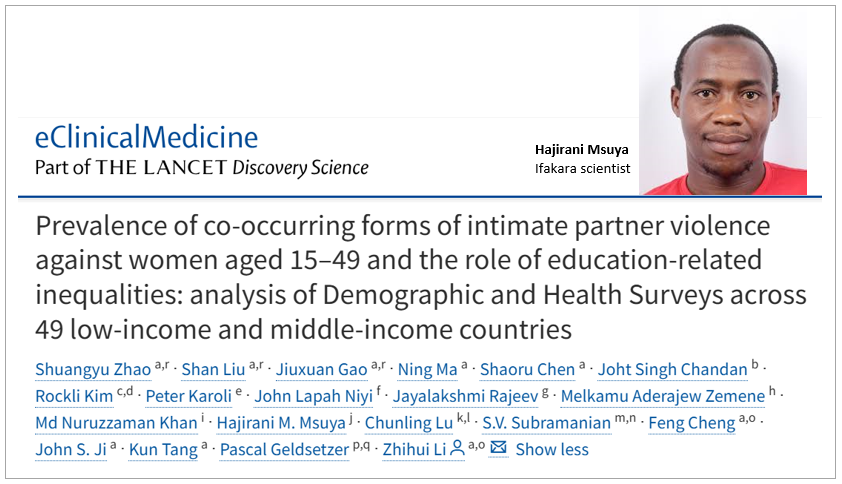
GENDER: Education linked to lower rates of multiple forms of violence against women

A new study from Tanzania has revealed that women with higher education levels face significantly lower rates of multiple forms of intimate partner violence (IPV) across 49 low- and middle-income countries (LMICs).
The research, which Hajirani Msuya, a research scientist at the Ifakara Health Institute in Tanzania, contributed to, highlights education as a critical shield against the co-occurrence of physical, sexual, and psychological abuse—known as IPV co-occurrence.
Published on eClinical Medicine last week, the findings underscore the urgent need to expand schooling for girls in regions where access remains limited.
The study, which analyzed data from 344,661 women aged 15–49, is one of the first to map the prevalence of IPV co-occurrence—where women experience at least two of these abuse types within a year—across multiple LMICs.
Msuya and her team found that 36.6% of women with no education and 25.4% with only primary schooling reported low wealth, compared to just 11% and 1.9% for those with secondary or higher education. Rural living followed a similar trend, with 82.7% of uneducated women and 75.4% with primary education in rural areas, dropping to 63.2% and 39.4% for those with secondary or tertiary education.
Education as a game-changer
The results paint a stark picture: IPV co-occurrence is alarmingly common in LMICs, but education slashes its prevalence. Women with no schooling faced the highest rates, while each step up the educational ladder—primary, secondary, and beyond—cut the odds of experiencing multiple abuse types. Notably, adding just one year of schooling reduced a woman’s chance of recent poly-victimization by 1 percentage point and lifetime risk by 2 points.
Yet, the data revealed a troubling twist: women with primary education reported the highest rates of IPV subtypes involving sexual violence. Msuya suggests this could reflect a transitional phase where basic education raises awareness of rights but lacks the empowerment secondary schooling provides to escape abusive situations.
A global crisis in access
The findings come with a warning: millions of girls in LMICs, are locked out of secondary education. This gap fuels gender inequality, trapping women in cycles of violence. “Unequal access to education globally may exacerbate IPV risks,” Msuya noted, pointing to early marriage and poverty as compounding factors among less-educated women.
Call to action
Msuya and his team urge governments to extend compulsory schooling policies tailored to each country’s needs. “If you educate a man, you educate an individual, but if you educate a woman, you educate a nation,” Msuya said, echoing a timeless adage with fresh data to back it. The study’s reflection— “Educate the Women and You Change the World”—frames education as a cornerstone for growth, development, and dismantling harmful gender norms.
Using advanced statistical tools like nonparametric restricted cubic splines, the researchers uncovered how education’s protective effect varies—stronger leaps from no schooling to primary, subtler gains from secondary to tertiary. Odds ratios confirmed stark disparities: uneducated rural women were far more vulnerable than their educated urban peers.
What’s next?
The study, drawn from Demographic and Health Surveys, calls for targeted efforts in low-resource settings. With IPV co-occurrence stubbornly high, the message is clear: investing in girls’ education isn’t just a moral win—it’s a proven strategy to curb violence and uplift societies. For now, Msuya’s work stands as a clarion call: educate women, and the world changes—one classroom at a time.
Read the publication here.
